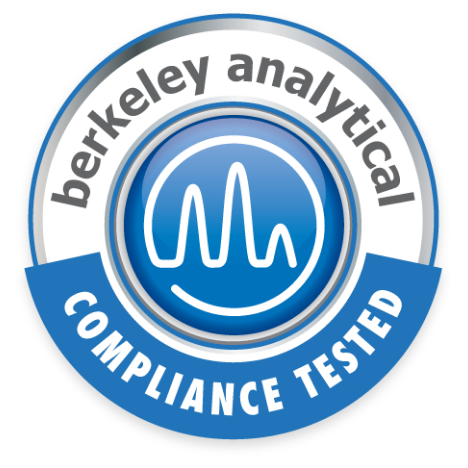Self-Declared Claims for Low-Emitting Materials using ClearChem®
How to Get the Most Benefit from Your Test Results
Most green building rating systems offer Low-Emitting Material (LEM) credits or have specific prerequisites for specifying and using interior products and furnishings with demonstrated low emissions of VOCs of potential health concern. In the U.S., CDPH Standard Method V1.2 is used to measure and assess VOC emissions from such products. In the EU, the test methods for VOC emissions are EN 16516 and ISO 16000-9, and Germany and other EU countries have assessment schemes for evaluating the emission results.
Companies manufacturing and selling products used in finishing building interiors can establish LEM product claims in two ways. They can either engage a third-party product certification program to create these claims or they can establish their own self-declared (i.e., first-party) product claims. Both solutions require testing. Here, we describe the procedures for establishing first-party claims, which are becoming an increasingly viable option.
From Test Results to Product Compliance with Low-Emitting Material Credits in Three Steps
Step 1 – Test a sample of your product and receive compliant test results and a laboratory certificate
Step 2 – Submit laboratory certificate and receive an approved ClearChem Declaration for your tested product
Step 3 – Distribute your ClearChem Declaration to architectural projects via Origin or directly to qualify your product for LEM credits
Making a Self-Declared Product Claim
The Internationally accepted practices for first-party, single attribute, environmental product claims are defined in ISO 14021, Environmental labels and declarations — Self-declared environmental claims (Type II environmental labelling). Section 8 of CDPH Standard Method V1.2 defines key practices that are specific to LEM product claims.
In order for a company to establish self-declared LEM product claims, it needs to decide what products need to be sampled and tested for VOC emissions. This is not always an easy decision. Guidance on product sample selection is presented in Section 8 of the CDPH Standard Method. For example, products made with the same chemical ingredients and the same processes may be grouped together if there is supporting evidence. However, extension of a claim to include multiple products typically is made after the testing of a representative product sample is performed. Our experts are available to assist customers with decisions regarding the selection of appropriate test items.
Once a product sample has been demonstrated to meet the acceptance criteria for the test, the next step is to combine this evidence of successful testing with statements regarding quality control procedures in manufacturing which essentially guarantee that the test results are representative of the product placed into commerce. Examples of quality control procedures include documented control of the manufacturer’s supply chain and specific quality control testing programs. The resulting product claim can be published directly by the company. The U.S. CPSC provides guidance for creating a self-declared certificate based on a laboratory report that is widely used in the toy and childcare product industry. Other than this example, there is not much specific guidance on the format for a self-declared product claim.
Berkeley Analytical's ClearChem® Self-Declared Program
Berkeley Analytical created the ClearChem Program to offer companies a practical alternative to third-party certification. ClearChem is a standardized declaration for making self-declared LEM product claims. Our customers can use this form to self-declare compliance of their products against the acceptance criteria in CDPH Standard Method V1.2. Importantly, USGBC has reviewed ClearChem and officially recognizes it as an accepted program for USGBC LEED v4/4.1 EQ Credit: Low Emitting Materials. The ClearChem Self Declaration is designed to present all of the information needed for the LEED LEM credit and the LEM requirements in other voluntary green building standards and regulatory green building codes. Thus, a company’s certificate of conformity created using the ClearChem format provides architects, purchasing organizations, and sustainability consultants with complete information regarding LEM compliance in a standardized, easy to interpret format. These users will appreciate the fact that the ClearChem declaration is fully transparent in that each declaration is supported by a VOC emission test and that important details regarding the assessment are revealed.
Participation in ClearChem is available to companies that test their products with Berkeley Analytical. There is no additional charge beyond the testing costs. Before using the ClearChem Self Declaration, a company enters into an implementation agreement with Berkeley Analytical in which they agree to follow the procedures and requirements in ClearChem Standard BkA-CC-01. Each participating company receives their own web page where they can highlight their environmental stewardship program and offer downloadable PDF certificates of conformity for their individual products. These declarations are posted in the ClearChem Directory for a period of two years from the date of the underlying laboratory test. Additionally, ClearChem is a recognized reporting source for Origin.build and communicates the declarations to the Origin Material Data Hub.
Promoting Your ClearChem Product Claim
ClearChem can function as a marketing tool. Product claims made using ClearChem are an effective way for a company to demonstrate to their customers that their products are compliant with Low Emitting-Material guidelines. A company can provide links to their declarations on the ClearChem directory, can post their declarations directly on their own websites, and can distribute them to their customers. Once a declaration is posted to the Origin Material Data Hub, we recommend that the company create an account, if they don’t already have one, and link their products to the declarations on the database. In this way, database users will see the LEM declaration when they search for products to use on their architectural projects.


